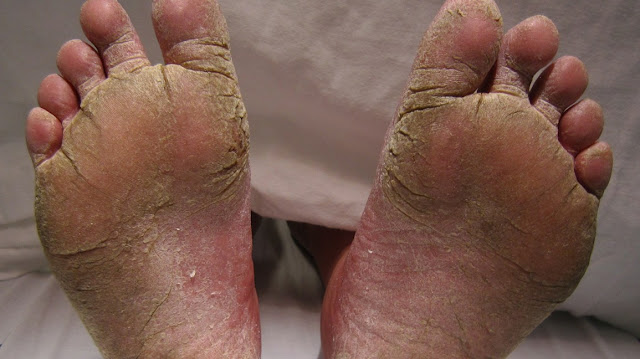Why Hypertension Increases Damage To Eyes Of Diebetic Patients
hy Hypertension Increases Damage to Eyes of Diabetic Patients
ScienceDaily (July 12, 2012) — Hypertension frequently coexists in patients with diabetes. A new University of Georgia study shows why the co-morbid conditions can result in impaired vision.
Share This:
41
See Also:
Health & Medicine
* Hypertension
* Diabetes
* Heart Disease
* Blood Clots
* Eye Care
* Wounds and Healing
Reference
* Diabetes mellitus type 2
* Diabetic diet
* Hypertension
* Hyperglycemia
"Results showed early signals of cell death in eyes from diabetic animals within the first six weeks of elevated blood pressure.
Later, the tiny blood vessels around the optic nerve that nourish the retina and affect visual processing showed signs of decay as early as 10 weeks after diabetic animals develop hypertension," said Azza El-Remessy, assistant professor in the UGA College of Pharmacy and director of the UGA clinical and experimental therapeutics program. The study examined animals with early and established stages of diabetes that also had hypertension. The results, which highlight the importance of tight glycemic control and blood pressure control to delay diabetes-related vision loss, were published in the June issue of the Journal of Molecular Vision. The study was the first to understand or explain why combining increased blood pressure with diabetes would hurt blood vessels in the eye.
"The fact that controlling blood pressure in diabetic patients is beneficial has been shown through many major clinical trials," said Islam Mohamed, a third-year clinical and experimental therapeutics graduate student who co-authored the paper with El-Remessy. "Our study highlights the synergistic and immediate interaction between systemic hypertension and diabetes as two independent risk factors for persistent retina damage known as retinopathy. This emphasizes the importance of addressing different cardiovascular risk factors in a holistic approach for improving management and prevention of retinopathy." According to the Centers for Disease Control and Prevention, 45 percent of adults in the U.S. suffer from diabetes, hypertension or high levels of cholesterol in the blood called hypercholesterolemia. Approximately 13 percent of U.S. adults suffer from a combination of two of the conditions, and 3 percent have all three.
Early intervention is a key factor in improving the outcome for patients. "Health care providers, including pharmacists, should stress the importance of the tight control of blood sugar and blood pressure levels for their patients," El-Remessy said. "Providing patient education and counseling on how each of these metabolic problems independently can have accelerated devastating effects is critical and can result in better prevention and outcomes for the patients.
Later, the tiny blood vessels around the optic nerve that nourish the retina and affect visual processing showed signs of decay as early as 10 weeks after diabetic animals develop hypertension," said Azza El-Remessy, assistant professor in the UGA College of Pharmacy and director of the UGA clinical and experimental therapeutics program. The study examined animals with early and established stages of diabetes that also had hypertension. The results, which highlight the importance of tight glycemic control and blood pressure control to delay diabetes-related vision loss, were published in the June issue of the Journal of Molecular Vision. The study was the first to understand or explain why combining increased blood pressure with diabetes would hurt blood vessels in the eye.
"The fact that controlling blood pressure in diabetic patients is beneficial has been shown through many major clinical trials," said Islam Mohamed, a third-year clinical and experimental therapeutics graduate student who co-authored the paper with El-Remessy. "Our study highlights the synergistic and immediate interaction between systemic hypertension and diabetes as two independent risk factors for persistent retina damage known as retinopathy. This emphasizes the importance of addressing different cardiovascular risk factors in a holistic approach for improving management and prevention of retinopathy." According to the Centers for Disease Control and Prevention, 45 percent of adults in the U.S. suffer from diabetes, hypertension or high levels of cholesterol in the blood called hypercholesterolemia. Approximately 13 percent of U.S. adults suffer from a combination of two of the conditions, and 3 percent have all three.
Early intervention is a key factor in improving the outcome for patients. "Health care providers, including pharmacists, should stress the importance of the tight control of blood sugar and blood pressure levels for their patients," El-Remessy said. "Providing patient education and counseling on how each of these metabolic problems independently can have accelerated devastating effects is critical and can result in better prevention and outcomes for the patients.




Comments
Post a Comment